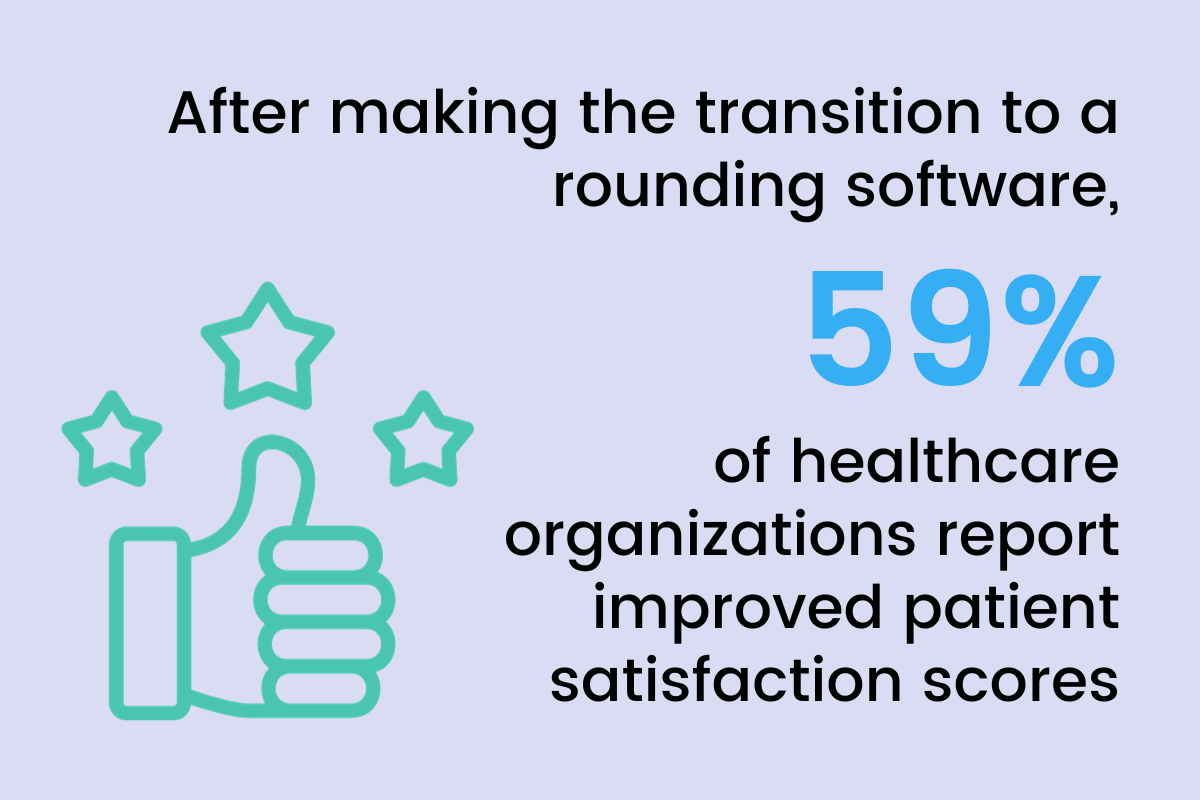For healthcare providers, the physical environment of care has a significant impact on patient wellbeing and the ability of care teams to deliver high-quality outcomes. As the healthcare industry has evolved to focus more on patient-centered care, an environment of care rounding checklist has become an increasingly useful tool in improving both patient and staff engagement.
Why an Environment of Care Rounding Checklist Matters
According to the Joint Commission, “protecting patients from harm involves more than safe treatments and procedures. We must also consider where patients receive care, and minimize risks associated with the physical environment.” (1)
More than 600 studies have linked the hospital environment to factors such as patient satisfaction, stress, health outcomes and overall health care quality, according to the American Hospital Association. (2)
Ensure that the EOC is considered as a factor in the prevention of hospital acquired infections, medication errors, and patient falls, just to name a few.
Furthermore, according to the Agency for Healthcare Research and Quality, patient safety issues such as hospital-aquired infections, medication errors, and patient falls were found to have been strongly influenced by environmental factors during their research into the environment of care (EOC) impacting on patient safety
As a result, many healthcare departments have begun to instill rounding in patient rooms as well as in hallways, waiting rooms, restrooms, and even entrance areas to ensure a safe physical environment. These rounds, referred to commonly as EOC rounds, play a critical role in ensuring the safety of patients and staff, as well as in optimizing the overall operations of a healthcare facility. (1)

An Environment of Care Rounding Checklist
Using checklists in healthcare is one of the most effective tools that care teams can use to ensure consistency and quality while performing Environment of Care rounding in hospitals and other types of healthcare organizations. Checklists provide a list of items that healthcare teams should ask or observe during rounds. (3)
Every action item on the rounding checklist should be clearly defined and have a specific person assigned to the task, in order to ensure that it is properly followed.
An effective Environment of Care rounding Checklist may ask questions such as (4):
- Does the room need to be rearranged to clear paths (with the patient’s permission)?
- Are all beds adjusted into a locked position?
- Has the room been arranged so that items are within the patient's reach (e.g., are walking aids within safe reach)?
- Are there any high, broken, or missing thresholds that need to be replaced?
- Are there any burned-out or flickering light bulbs or call lights that need to be replaced?
- Are there any exposed cords hanging in the room?
- Have any clean glove boxes been placed on top of used sharps containers?
- Are all hallways clear of equipment?
- Are emergency exits clear of obstructions?
- Are wet-floor signs used and removed in a timely manner?
In these ways, an Environment of Care Checklist helps to ensure that patients and staff remain safe and that the healthcare facility remains in compliance with Joint Commission and Department of Health guidelines and regulations. (4)
What to Look for in an Environment of Care Rounding Software
Part of the growing demand for Environment of Care rounding has come from the emergence of technology in the rounding process, which has led to significantly faster and better identification of patient safety risks. Traditional methods of performing rounds manually on paper or through Excel spreadsheets are not only incredibly time intensive for care teams; it also doesn’t allow for follow-up action plans to be executed as quickly as necessary.
After making the transition to a rounding software, 59% of healthcare organizations report improved patient satisfaction scores, and 37% of organizations report benefiting from rounding technology’s immediate feedback, accountability and compliance benefits. (5)
When looking for a software tool for Environment of Care rounding, healthcare teams should consider the following factors:
1. Streamlined data entry
In order to perform faster, more efficient rounding, care teams need to be able to input rounding data at the click of a button. Look for a software tool that uses user-friendly form fields and is compatible across mobile, desktop, and tablet devices.
2. Direct communication of rounding data to appropriate team members and supervisors
When an environmental issue that needs attention is identified with a rounding software, a workflow should be triggered to make sure that the necessary people are notified in real-time. If the issue isn’t addressed within a certain amount of time, then it should be automatically escalated to a manager or supervisor within the department. An effective rounding software needs to have automatic workflows and notifications built into the system so that issues get resolved as quickly as possible.
3. Ability to analyze and track information over time with custom dashboards and analytics
Customized reports allow healthcare teams to drill down into data across departments and identify the source of the problem so that it can be prevented in the future. Access to robust analytics drives long-term improvements, so care teams should be sure to consider the flexibility and ease of use of dashboards when choosing an Environment of Care rounding software.
By implementing a tool for Environment of Care rounding and following the checklist items above, healthcare organizations can improve outcomes over time and help patients and staff get closer to zero harm.
References
- https://www.jointcommission.org/en/resources/patient-safety-topics/the-physical-environment/
- https://patientengagementhit.com/news/how-hospital-environments-affect-patient-satisfaction-levels
- https://www.ncbi.nlm.nih.gov/pmc/articles/PMC3205016/
- https://www.premiermedicalhv.com/wp-content/uploads/2013/01/EOC-Checklist.pdf
- https://klasresearch.com/report/digital-rounding-2018/1327


